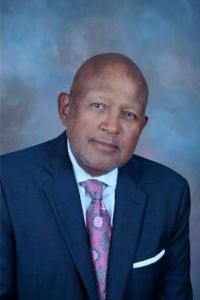
By Michael A. LeNoir, M.D.
NNPA Guest Columnist
Dr. Anthony Jones has been an AIDS specialist for more than 15 years. During that time, he has become more and more discouraged as he watched the AIDS epidemic in the San Francisco Bay Area become increasingly more of a problem for the African American Community.
“We’re really at a crossroads with HIV in the Black community,” he said. “We have the knowledge in the tools to dramatically impact the spread of HIV and extremely effective medications that can fully suppress the virus. People can have a normal life expectancy. But a lack of understanding about perceived risk, lack of access to care, fear and stigma are some of the greatest barriers to improving outcomes among my patients with HIV disease.”
The statistics support Jones’s perception of the disease. HIV has disproportionately affected Black Americans since the beginning of the epidemic and this disparity continues. Today, there are more than 1.1 million people living with HIV/AIDS in the United States, including more than 510,004 Black Americans.
Although Black Americans represent only 12 percent of US population, they accounted for 44 percent of the new HIV infections the 2010, an estimated 44 percent of the people living with HIV. The rate of new HIV infections was nearly eight times that of Whites and more than twice that of Latinos in 2010. The rate for Black men was the highest of any group, more than twice that of Latino men.
African American communities continue to experience higher rates of other sexually transmitted infections (STIs) compared with other racial/ethnic communities in the United States. Having an STI can significantly increase the chance of getting or transmitting HIV. The AIDS epidemic has had its most significant impact on Black women. Black women have the third-highest rate overall and the highest rate of HIV infection among women. Black women account for the largest share of new HIV infections and the incidence rate is 20 times the rate among White women.
Dr. Jones, like other experts, believes that more needs to be done to reach out to the African-American community, especially young gay Black men. He believes, as do most physicians and experts in the field treating AIDS that outreach efforts have decreased significantly since the pattern of infection has increasingly involved the African-American community.
More than 25 percent of Blacks, ages 18 to 64 have never been tested for HIV. About one in five Blacks living with HIV does not know they are infected. Diagnosis late in the course of HIV infection is common, which results in missed opportunities to get early medical care and prevent transmission to others.
The National Medical Association, and its physician membership, is committed to changing the conversation around HIV within the Black community. As African Americans, we must do more to reduce the impact that this disease has on our community. The message must be that while treatment options have improved the quality of life for people living with HIV/AIDS, we still need to be diligent with safe sex, regular testing and aggressive treatment when a diagnosis is made. HIV prevention projects for community-based organizations to provide effective HIV prevention services to gay, bisexual, and transgender youth of color and their partners must be expanded.
Support and technical assistance to health departments and community-based organizations to deliver effective prevention interventions for African Americans should be encouraged. Our community working together must create an environment where living comfortably with AIDs is better any alternative.
Michael A. LeNoir, M.D. is president of the National Medical Association, and one of the top clinical allergists and pediatricians practicing in the San Francisco Bay area.


